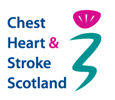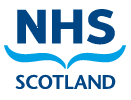Key points
- It is important to recognise signs and symptoms of hyperventilation. Breathing becomes faster and/or deeper and more carbon dioxide is exhaled from the lungs.
- Over-breathing may be useful in a stressful situation (for example when you’re in danger and need to run away) as it prepares the body for action. Carbon dioxide levels drop, adrenaline is released into the blood, heart and breathing rate increase and blood flow is diverted from the stomach to working muscles.
- However, if this over-breathing becomes more permanent, the brain recognises this lower level of carbon dioxide and accepts it as being normal, and the body remains on “high alert”. Abnormally low carbon dioxide levels result in changes to the behaviour of nerves, muscles and blood flow to control breathing.
- Dysfunctional breathing patterns cause shoulder and neck tension, dry mouth and air swallowing.
| Additional information | |
|---|---|
|
If you would like to know more about the psychological effects of breathlessness see the treatment section of RESPe: |
|
You have reached the end of Topic 2 - Assessment and common lung diseases.
It is strongly recommended that you work through each topic before attempting the topic assessment.




